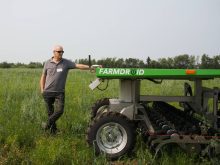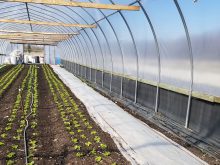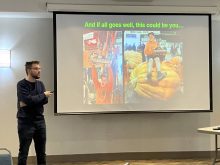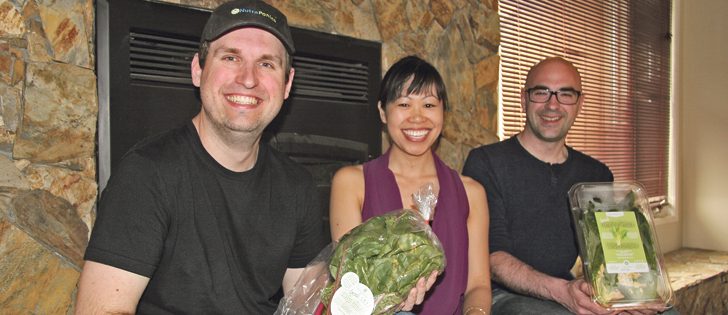In the right greenhouse, some cold-hardy vegetables can be grown in winter without additional heating
ORILLIA, Ont. — High tunnels are not just about extending the growing season for market gardeners. In latitudes where the sunlight allows, some are now harvesting crops year round with no supplemental heat.
Adam Montri operates Ten Hen Farms at a latitude of 42.8 degrees north in central Michigan with his family. He is also the hoop-house outreach specialist at Michigan State University.
He said kale, spinach, root crops and certain salad greens can be grown under such a system, but the crops need to be able to freeze above ground overnight and survive if they are to make it in the dead of winter.
Read Also

Canadian Food Inspection Agency red tape changes a first step: agriculture
Farm groups say they’re happy to see action on Canada’s federal regulatory red tape, but there’s still a lot of streamlining left to be done
Patience is required. You’ll never achieve the short planting-to-harvest interval as in summer, Montri said.
“If there’s just four hours of warm temperature during a day, it really doesn’t do much for plant growth,” he told the Dec. 6 Ecological Farmers Association conference.
Light intensity is far lower during winter, especially December and January, and even a single layer of plastic will reduce that intensity by 15 percent.
University of Minnesota extension says the north wall of greenhouses in more northerly latitudes should be opaque with thermal storage and insulating qualities. Alternatively, the north wall could be attached to an existing structure or be built into an earthen slope.
High tunnel greenhouses intended for winter production should ideally be laid out east to west to capture the maximum amount of sunlight.
“But that doesn’t mean that if your greenhouse is north-south it’s not going to work. I’ve seen them and they do work,” Montri said.
As well, avoid locations where structures or trees will shade the greenhouse space. For the same reason, space multiple tunnels seven to nine metres apart.
Tunnel shape is another consideration. Montri prefers the gothic cathedral-style of tunnel on his farm because it is able to support a snow load.
Strength should also be considered when choosing the metal structural components. Montri said heavier gauge is better, while structural bracing reduces sway in a high wind.
He recommended 13-gauge steel for the ground anchor posts and suggested that growers not “chintz out” by building less-than-solid end walls.
Montri also said growers should pay a bit extra for a higher roof line. This increases the capacity of a hoop house to hold warmth and allows pathways to be located along the walls where plant growth is more challenging.
“You’re going to lose two feet along the walls in a 20-foot-wide greenhouse because of the cold creeping in, and it’s the same for a 30-foot-wide structure,” he said.
“But with the wider structure, there’s more growing space as a percentage of the total area.”
Growers, especially those with more sensitive crops, use an interior cover system to create a greenhouse-within-the-greenhouse effect to trap heat near the plants. Plastic requires more management, which is why Montri prefers durable, 30-weight, row-cover fabric held up by a system of high-tensile wires one metre above ground level.
Covers are normally pulled aside, but plants can be harvested on extremely cold days by crawling underneath.
Fortunately, that occurs only once or twice over the winter season at Montri’s farm.
Ventilation is important both summer and winter. During warm weather it’s usually achieved by rolling up the tunnel sides. In winter, Montri opens the end doors as the weather permits to reduce humidity.
For watering, he uses underground lines with frost-free hydrants that drain when the water is turned off. It’s important to disconnect and drain all hoses before leaving for the night.
He said producers can grow three or four crops in the same space over 12 months in a winter hoop house system if they are willing to be flexible. For instance, spinach might be harvested from early December until March, or until it bolts. A crop such as peas might follow with beans and radishes planted in summer and kale by summer’s end.
“Whatever you do, make sure you have a market before you start growing in winter,” he said.
“I can’t stress that enough.”















